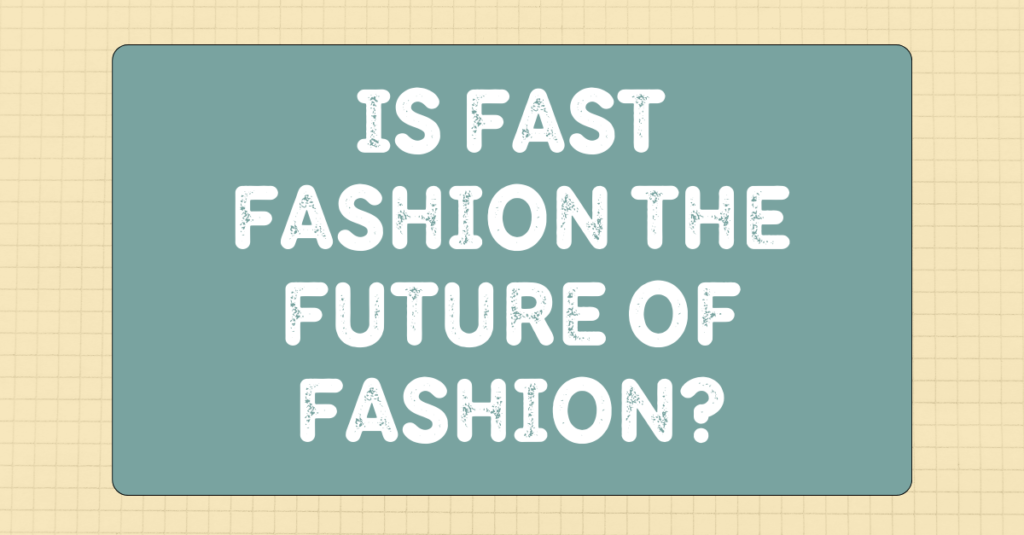Is Fast Fashion the Future of Fashion?
Introduction
Fashion is a dynamic industry that constantly evolves, driven by changing consumer preferences and the pursuit of new trends. Over the years, fast fashion has emerged as a prominent force, offering affordable, trendy clothing with quick turnaround times. However, the rise of fast fashion has sparked a heated debate within the fashion industry and among consumers. Is fast fashion the future of fashion, or is it a detour that we should reconsider? In this article, we will delve into the various aspects of fast fashion to provide a comprehensive analysis of its impact and potential future.
The Rise of Fast Fashion:
Fast fashion gained momentum in the early 2000s and quickly transformed the fashion landscape. Brands like Zara, H&M, and Forever 21 pioneered the concept, offering inexpensive clothing inspired by high-end fashion houses. Fast fashion thrives on speed and efficiency, with its supply chains optimized for rapid production and distribution. It enables consumers to stay up-to-date with the latest trends without breaking the bank.
Affordability and Accessibility:
One of the primary appeals of fast fashion is its affordability. It allows consumers to experiment with different styles and regularly update their wardrobes without incurring significant costs. Fast fashion retailers leverage economies of scale and efficient production methods to offer garments at lower price points compared to traditional fashion brands. Additionally, their extensive store networks and online presence enhance accessibility, catering to a wide range of consumers.
Trends and Consumer Demand:
Fast fashion excels at capitalizing on fleeting trends. It quickly translates runway styles into affordable garments, allowing consumers to stay fashion-forward without the hefty price tag. With social media platforms like Instagram and TikTok driving the demand for ever-changing looks, fast fashion brands provide an avenue for consumers to replicate the styles they see online. However, this rapid turnover of trends raises concerns about sustainability and ethical production practices.
Environmental and Ethical Concerns:
Fast fashion’s breakneck production cycle has significant environmental consequences. The industry contributes to textile waste, water pollution, and greenhouse gas emissions. The pressure to meet demand and deliver products at a low cost often results in exploitative labor practices and poor working conditions. Many fast fashion brands outsource production to countries with lax regulations, leading to instances of low wages, long hours, and unsafe workplaces.
Sustainability Efforts:
Acknowledging the environmental and ethical challenges, some fast fashion brands have taken steps towards sustainability. They have introduced eco-friendly materials, recycling programs, and supply chain transparency initiatives. However, critics argue that these efforts are often insufficient and overshadowed by the overall unsustainable nature of the fast fashion business model.
Slow Fashion as an Alternative:
As an antithesis to fast fashion, the slow fashion movement advocates for sustainable and ethical practices. Slow fashion promotes quality over quantity, focusing on craftsmanship, durability, and timeless designs. By encouraging consumers to invest in well-made, durable garments, slow fashion aims to reduce waste and foster a more conscious approach to consumption. While slow fashion is gaining traction, it faces challenges in terms of affordability and accessibility for the average consumer.
The Role of Technology:
Technology has the potential to reshape the future of fashion. Innovations like 3D printing, digital design, and virtual reality are already making an impact in the industry. These advancements can facilitate sustainable practices by reducing waste, optimizing production processes, and enabling virtual shopping experiences. The integration of technology with fashion could bridge the gap between fast fashion and sustainability, providing a pathway towards a more responsible and efficient industry.
Conclusion
The future of fashion lies at a crossroads, with fast fashion offering affordability, accessibility, and trend-driven appeal, but also burdened with environmental and ethical concerns. While fast fashion has undoubtedly reshaped the industry, there is growing awareness about the need for sustainability and ethical practices. The fashion industry, consumers, and policymakers must work together to strike a balance between innovation, accessibility, and responsible practices. Whether fast fashion remains the future of fashion or a detour depends on our collective efforts to address its shortcomings and embrace a more sustainable and conscious approach to clothing consumption.

My name is Rohit Vagh and I’m a content writer specializing in fashion and lifestyle. I have three years of experience in this field and have written various articles. My writing style is creative and engaging, and I strive to create content that resonates with my readers. I have a deep passion for fashion and am constantly researching the latest trends and styles to make sure my readers are up to date. I’m excited to continue my career in blogging, and I’m always looking for new opportunities in the fashion and lifestyle space.





